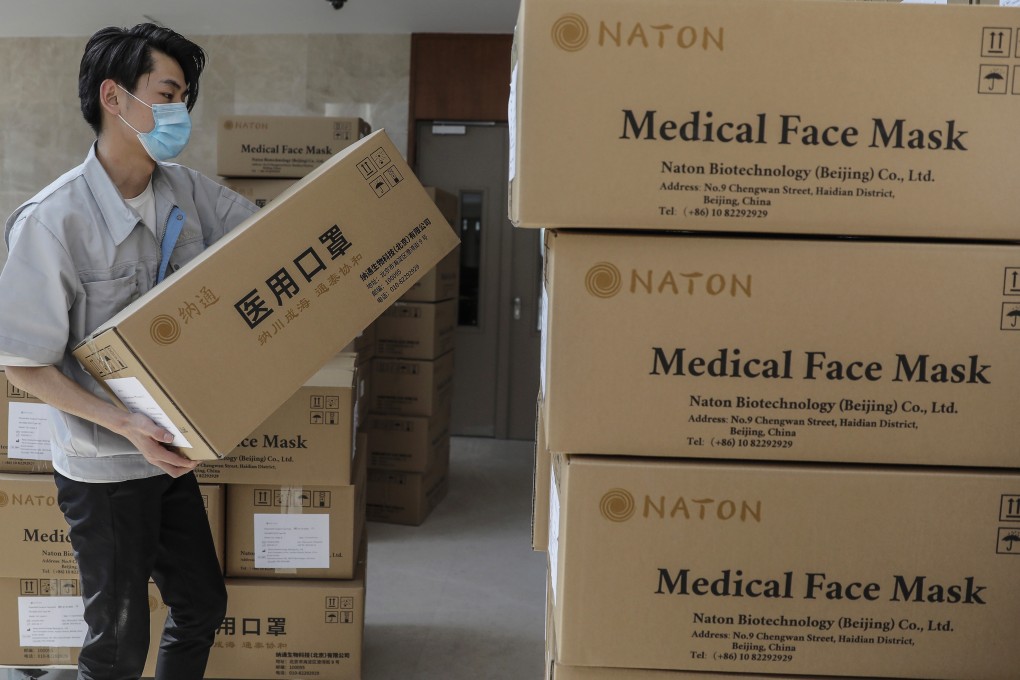Advertisement
Coronavirus: China’s medical supply boom, lockdown backlog sparked surprise April exports rise
- A boom in overseas sales of medical supplies, including masks and coronavirus testing kits, are likely to have helped spur a surprise 3.5 per cent rise in exports
- But analysts warned the return to growth will be short-lived, with global demand set to collapse, amid an expected recession this year
Reading Time:3 minutes
Why you can trust SCMP

A surprise jump in Chinese exports in April will be short-lived, analysts said, with the world’s second largest economy unable to stay sheltered from the demand shock to come from the global economic downturn.
A 3.5 per cent rise in shipments last month caught economists by surprise and left them scrambling for explanations as the consensus forecast was for an 11 per cent contraction.
The rise was, in part, due to factories coming back online in China in March and April to fulfil orders that had been made in the first two months of 2020, when much of the economy was under lockdown.
Advertisement
The rise, therefore, is not indicative of underlying strength, economists said, with May’s shipments set to drop amid widespread lockdowns across many of China’s major export markets.
China’s external demand is suffering from the impact of lockdowns and social distancing in the rest of the world
“China’s external demand is suffering from the impact of lockdowns and social distancing in the rest of the world,” said Louis Kuijs, a China analyst at Oxford Economics. “But April shipments may have been boosted by exporters making up for shortfalls in the first quarter due to supply constraints then.”
Advertisement
Advertisement
Select Voice
Choose your listening speed
Get through articles 2x faster
1.25x
250 WPM
Slow
Average
Fast
1.25x